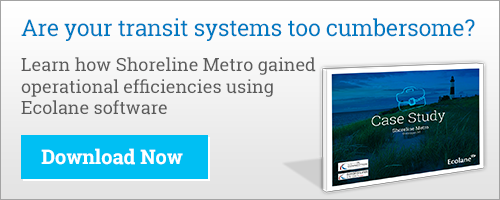In the broadest sense, marketing helps to connect the dots between consumer behavior and the strategies and tactics used to promote and sell products or services through various communication channels. It’s widely understood that possessing a sound marketing strategy is a beneficial asset to have, but within the transportation industry, it often ranks lower on the totem pole than that of sales and operations.
The Importance of Marketing in Public Transportation
However, in recent years we have begun to see an increased awareness among transit agencies that all transit riders are not one and the same, and thus, require different means to reach each unique audience. From commuters to urban transitters to environmental activists and more, the public transportation system is made up of a diverse group of riders, all of whom are utilizing it for various reasons.
As is in most industries, marketing efforts towards each group of riders are executed differently, but all possess commonalities that help to communicate the overarching value that public transportation offers; mobility, convenience, comfort, affordability, and social responsibility.
Marketing Strategies and Tactics to Leverage
There are a multitude of marketing strategies and tactics that transit agencies can leverage to better reach and engage with their various riders. And among the most effective are establishing a strong digital presence, creating a public relations platform, and heavy involvement in community outreach.
-
Digital Presence
Establishing a strong digital framework has become an essential marketing strategy for all businesses and industries, not just for transit. We live in a digital age, and adapting to the behaviors and preferences of consumers is paramount to effectively reaching and engaging with your audiences.
Website:
Having a modern, well-functioning website is a great way for transit agencies to cultivate a positive image within their communities. Often used to deliver information, provide scheduling information, and to highlight various product and service offerings, a strong website is a direct reflection of an agency’s mission, vision, and personality. Subsequently, agency-specific websites must now possess a mobile-responsive website in order to allow riders to access a wealth of tools and resources at the click of a button, which ultimately leads to increased customer satisfaction.
Social Media:
Social media is a very simple and cost-effective marketing strategy to implement. As we’ve all seen, social media has become a major platform for consumers to research, review, and gain social validation for any and all products and services. Having a strong social presence not only helps transit agencies improve their brand awareness, but it enables more effective and frequent communication and engagement with riders.
Some agencies have been apprehensive to establish a social presence due to the potential negativity that can arise. However, although it may seem like a way to safeguard yourself from customer complaints, it actually opens the doors to address any concerns, communicate why a mishap or delay occurred, and provide a tailored and personal response to that rider.
-
Public Relations
Building off of a strong digital presence, public relations is another great communication platform to leverage. A strategy often used to help create a favorable public image; PR allows transit agencies to notify their communities of key initiatives such as infrastructure developments, changes in operations, and advancements in transit technologies. In addition, due to the amount publicity that can be gained through PR, transit agencies are able to further promote the benefits that public transportation offers in an effort to increase ridership.
-
Community Outreach
Public transportation agencies are designed to provide affordable, dependable, safe, and convenient transportation alternatives to their local communities. By actively participating in community outreach programs and events, transit agencies are able to further showcase their dedication to their community, enhance their brand reputation, and encourage the locals to take advantage of the benefits that the public transportation system offers.
Public transportation has made significant advancements in an effort to improve operational capabilities and create a more enjoyable experience for its riders. However, as the stigma of transit has begun to transition into a more positive light, it has become increasingly important for transit agencies to place an emphasis on its marketing efforts to drive improved communication and engagement with riders and further the progression of public transportation as a whole.
About the Author

Ecolane
Read Ecolane's blog articles for perspective, opinion and information on transit and paratransit issues.


